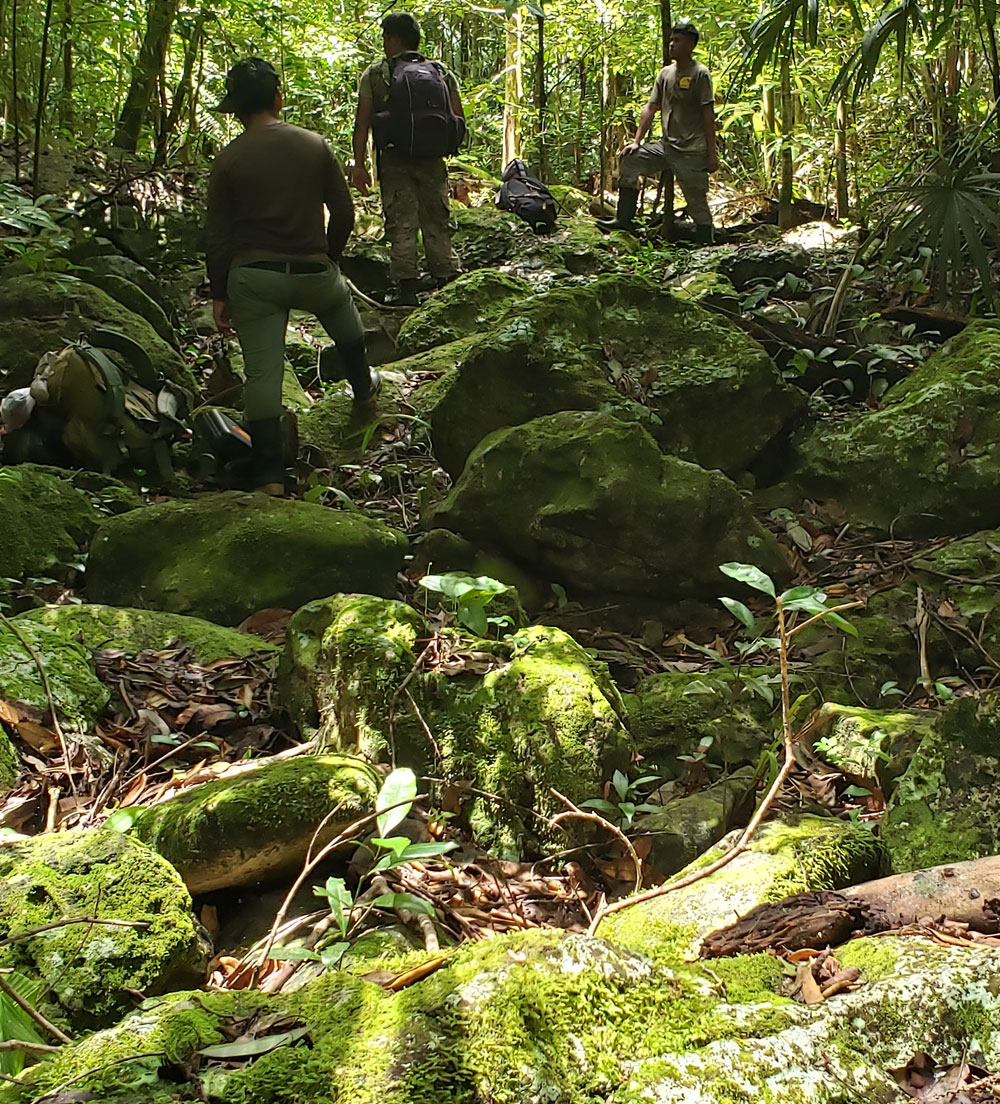
About Tapir Mountain
About Belize Tapir Mountain Nature Reserve
Tapir Mountain Nature Reserve (TMNR), Belize’s very first nature reserve, comprises 6,286 acres of pristine lowland tropical evergreen forest on limestone (karstic) soils. Nestled in the lowland foothills below the north-facing escarpment of the Maya Mountains Massif, it is located a mere eight miles southwest of Belmopan, Belize’s capital, and five miles south of the Western Highway corridor that connects Belize City with the Guatemalan border. TMNR lies entirely within the Belize River watershed and provides significant protection of the Barton Creek and Roaring Creek sub-watersheds. Barton Creek partially defines TMNR’s western boundary and Roaring Creek its eastern boundary. The undisturbed forested landscapes of TMNR drain into these two creeks, providing a significant watershed buffer for the downstream communities of Teakettle, Ontario, and Blackman Eddy. Characteristic landscape features of the reserve’s rugged limestone topography include sinkholes and underground streams and caves formed from erosion of the porous karstic layer. Water can be scarce in this karst landscape, especially during the dry months, during which smaller streams that emerge as springs within the hill slopes, retreat underground.
Due to reduced rainfall and seasonally dry conditions, forests on limestone tend to have species adapted to drought conditions. The forest ecosystems of TMNR support a rich diversity of flora and fauna with perhaps as many as a thousand species of plants (of which only a fraction have been documented to date), at least 55 mammal species, and more than 340 species of birds (and counting). The reserve protects two of Belize’s high-risk species –Central American Spider Monkey and White lipped Peccary. Three species – Baird’s Tapir, Central American Spider Monkey, and Yucatan Black Howler Monkey are globally ‘Endangered’ under IUCN classification, and one (White-lipped Peccary) is classified as ‘Vulnerable’. TMNR has also been identified as an important wintering habitat for migratory bird species and as an important forest foraging site for the critically endangered Orange-breasted Falcon, which nests in the Mountain Pine Ridge three miles to the south.

Communities Adjacent to Tapir Mountain Nature Reserve
The primary stakeholder communities of TMNR are located along the Western Highway corridor. These include Teakettle (population: 1,747), Ontario (population: 775) and Blackman Eddy (population: 534). Their primary focus is agricultural activities and employment in the tourism sector. Smaller stakeholder villages in the area include the farming communities Upper and Lower Barton Creek (populations: 380 and 193 respectively) and Seven Miles El Progresso (population: 483).
The Protected Landscape
Tapir Mountain lies adjacent to Actun Tunichil Muknal (ATM) Natural Monument, which was originally part of the Nature Reserve but excised to provide visitor access to the cave system. This cave system contains many karstic features and is of great cultural importance. While Tapir Mountain Nature Reserve is not directly connected to other protected areas in the landscape, it nevertheless retains forest connectivity with both Elijio Panti National Park, Thousand Foot Falls Natural Monument, and Mountain Pine Ridge Forest Reserve (through the Bull Run private reserve). Together these areas provide connection to the larger Maya Mountains Massif, one of the two largest blocks of forest in Belize.
Traversing Tapir Mountain
TMNR is accessible in the dry season through Teakettle, Blackman Eddy, and Georgeville (through Barton Creek). During the wet season, however, the most accessible point of entry is though Teakettle, as the rain and mud tend to make roads impassable. There are also monitored trails that access the area from Pook’s Hill and Actun Tunichil Muknal Natural Monument. TMNR is not accessible from the south because of the steep karstic landscape and near-vertical escarpment that defines the northern border of the Mountain Pine Ridge.
